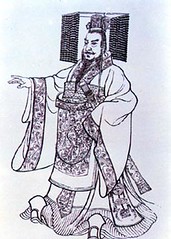Qin Shi Huangdi remains a controversial figure in Chinese history, says Wikipedia.
After unifying China, he and his chief adviser Li Si passed a series of major economic and political reforms.[3] He undertook gigantic projects, including the
- first version of the Great Wall of China, the
- famous city-sized mausoleum guarded by a life-sized Terracotta Army, and a
- massive national road system, all at the expense of many lives. To ensure stability, Qin Shi Huang
- outlawed Confucianism and
- buried many scholars alive.[4] All
- books other than those officially decreed were banned and burned in what is known as the great Confucian purge. Despite the
- tyranny of his autocratic rule, Qin Shi Huang is regarded as an important figure.
Qin Shi Huang and his prime minister Li Si completely abolished feudalism. The administration was now
- based on merit instead of hereditary rights.
Qin Shi Huang and Li Si unified China economically by
- standardizing the Chinese units of measurements such as
- weights and measures, the
- currency, the
- length of the axles of carts to facilitate transport on the road system.[25] The emperor also developed an extensive
- network of roads and canals connecting the provinces to
- improve trade between them.[25] The currency of the different states were also standardized to the Ban liang coin (半兩).[24] Perhaps most importantly, the
- Chinese script was unified.
Friday, March 27, 2009
Subscribe to:
Post Comments (Atom)


No comments:
Post a Comment